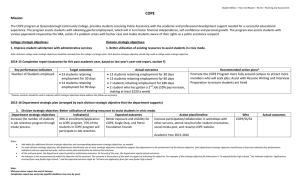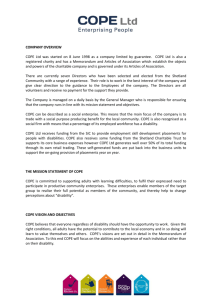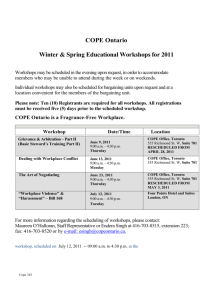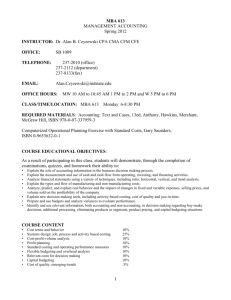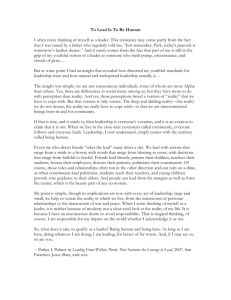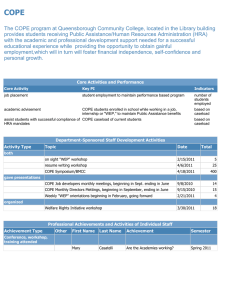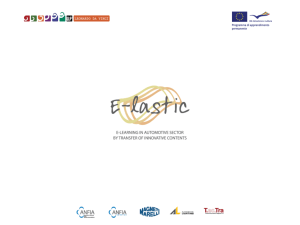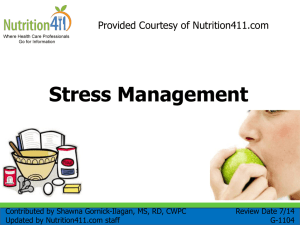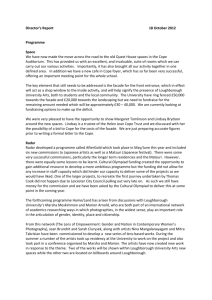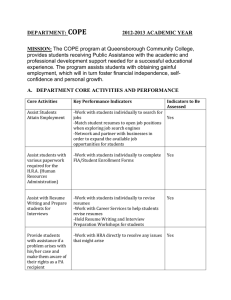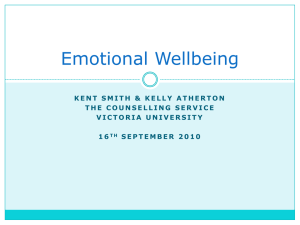COPE Logic Model () - Tallahassee Childhood Obesity
advertisement
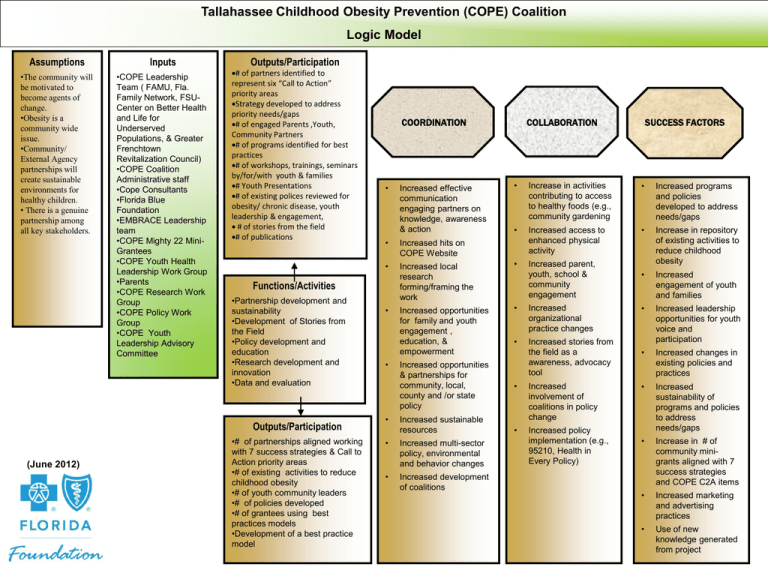
Tallahassee Childhood Obesity Prevention (COPE) Coalition Logic Model Assumptions Inputs •The community will be motivated to become agents of change. •Obesity is a community wide issue. •Community/ External Agency partnerships will create sustainable environments for healthy children. • There is a genuine partnership among all key stakeholders. •COPE Leadership Team ( FAMU, Fla. Family Network, FSUCenter on Better Health and Life for Underserved Populations, & Greater Frenchtown Revitalization Council) •COPE Coalition Administrative staff •Cope Consultants •Florida Blue Foundation •EMBRACE Leadership team •COPE Mighty 22 MiniGrantees •COPE Youth Health Leadership Work Group •Parents •COPE Research Work Group •COPE Policy Work Group •COPE Youth Leadership Advisory Committee Outputs/Participation # of partners identified to represent six “Call to Action” priority areas Strategy developed to address priority needs/gaps # of engaged Parents ,Youth, Community Partners # of programs identified for best practices # of workshops, trainings, seminars by/for/with youth & families # Youth Presentations # of existing polices reviewed for obesity/ chronic disease, youth leadership & engagement, # of stories from the field # of publications •Partnership development and sustainability •Development of Stories from the Field •Policy development and education •Research development and innovation •Data and evaluation •# of partnerships aligned working with 7 success strategies & Call to Action priority areas •# of existing activities to reduce childhood obesity •# of youth community leaders •# of policies developed •# of grantees using best practices models •Development of a best practice model • Increased programs and policies developed to address needs/gaps • Increased access to enhanced physical activity • Increased local research forming/framing the work • Increased parent, youth, school & community engagement Increase in repository of existing activities to reduce childhood obesity • Increased engagement of youth and families Increased opportunities for family and youth engagement , education, & empowerment • Increased organizational practice changes • • Increased stories from the field as a awareness, advocacy tool Increased leadership opportunities for youth voice and participation • Increased changes in existing policies and practices • Increased sustainability of programs and policies to address needs/gaps • Increase in # of community minigrants aligned with 7 success strategies and COPE C2A items • Increased marketing and advertising practices • Use of new knowledge generated from project • Increased hits on COPE Website • • SUCCESS FACTORS Increase in activities contributing to access to healthy foods (e.g., community gardening Increased effective communication engaging partners on knowledge, awareness & action • COLLABORATION • • Functions/Activities Outputs/Participation (June 2012) COORDINATION Increased opportunities & partnerships for community, local, county and /or state policy • Increased sustainable resources • Increased multi-sector policy, environmental and behavior changes • Increased development of coalitions • Increased involvement of coalitions in policy change • Increased policy implementation (e.g., 95210, Health in Every Policy)
